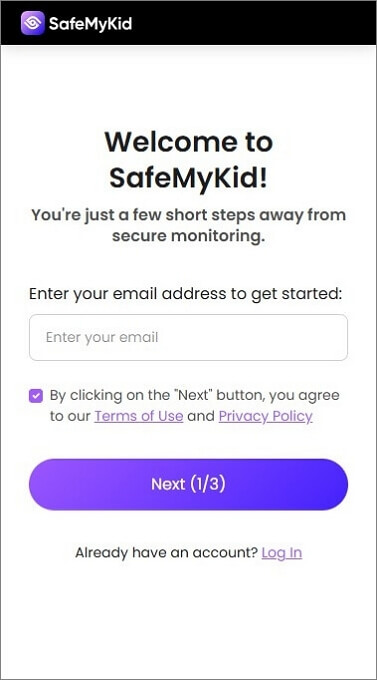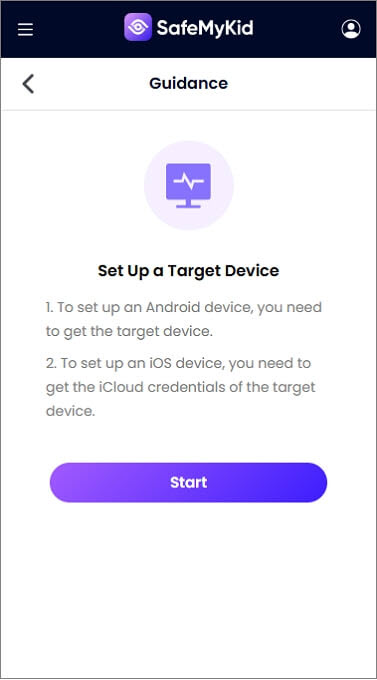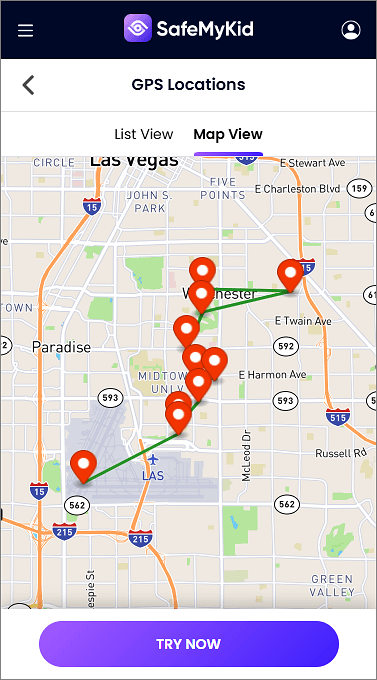Locate a Phone without Permission: 6 Methods That Actually Work

The search for ways to locate a phone without permission often stems from legitimate concerns like recovering lost devices, ensuring family safety, or addressing emergency situations where direct consent isn't immediately available.
![]()
While the desire to locate a mobile phone without permission is understandable in certain scenarios, it's crucial to recognize that unauthorized tracking typically violates privacy laws and ethical boundaries.
Why People Search for Ways to Locate Phones without Permission
Before exploring alternatives to locating a cell phone without permission, understanding the common motivations helps identify legitimate approaches that address the underlying need without legal or ethical implications.
Many searches for phone tracking without consent stem from legitimate concerns such as locating stolen devices, finding lost phones when the owner is unreachable, or ensuring the safety of family members during emergencies when conventional communication isn't possible.
However, it's essential to recognize that despite these legitimate concerns, tracking someone's phone without authorization typically violates privacy laws in most jurisdictions, potentially resulting in serious legal consequences, including criminal charges and civil liability.
Instead of pursuing unauthorized tracking, focusing on legal alternatives designed for specific legitimate scenarios provides effective solutions while respecting privacy boundaries and legal requirements.
SafeMyKid - The Best App to Locate a Phone without Permission

When facing situations where you need to locate a device but direct permission isn't immediately available, SafeMyKid offers a legitimate alternative with appropriate authorization frameworks for specific scenarios.
SafeMyKid provides comprehensive tracking capabilities designed primarily for authorized situations like parental monitoring of minor children, company-owned device management, and family safety applications where proper authorization exists.
Its sophisticated technology works within legal boundaries to provide device location while maintaining compliance with privacy regulations and ethical considerations that apply to different monitoring contexts.
Key Features of SafeMyKid to Locate a Phone without Permission
When evaluating legal alternatives to locating a phone without permission, several SafeMyKid capabilities stand out for legitimate tracking scenarios:
Parental Monitoring Framework - Provides a legal structure for parents to track minor children's devices with age-appropriate monitoring protocols.
Legal Compliance Design - Built specifically to operate within privacy regulations across different jurisdictions for legitimate tracking needs.
Transparent Authorization - Maintains appropriate documentation of tracking authorization to ensure legal compliance for all monitoring activities.
How to Set up SafeMyKid to Locate a Phone without Permission
Implementing SafeMyKid for authorized device tracking requires proper setup within legitimate monitoring frameworks:
Step 1. Create Your SafeMyKid Account
Visit the SafeMyKid website to register and establish your secure monitoring dashboard.

Step 2. Configure The Target Device
For iPhones: You can set up location tracking by logging in with the device's iCloud credentials. No physical app installation is required after initial setup.
For Android Devices: You'll need to download and install the SafeMyKid app directly on the device you want to track (requiring brief physical access during setup).

Step 3. Use SafeMyKid to Locate a Phone without Permission
Log in to your dashboard to view real-time location information and movement history, and configure geofence alerts without needing the physical device.

5 Other Alternatives to Locating a Phone without Permission
Instead of attempting to locate a cell phone without permission, consider these six legitimate approaches that address common tracking needs within legal and ethical boundaries.
1. Find My Device Services for Your Own Phones
![]()
When the primary concern is recovering your own lost or stolen device, manufacturer-provided location services offer the most legitimate and effective solution without any permission issues.
These built-in services leverage system-level integration for superior accuracy while operating completely within legal boundaries since you're locating your own property rather than tracking someone else.
Key capabilities include:
- Remote location identification of your own devices
- Last known position if the device is offline
- Battery level indication for recovery planning
- Sound activation to find misplaced phones nearby
- Remote locking for data protection during recovery
- Option to display contact information for the finders
Implementation approach:
- For Android: Use Google's Find My Device service
- For iOS: Use Apple's Find My service
- Access through web interfaces or companion apps
- Ensure the service is activated before loss occurs
- Consider enabling offline finding features
This approach completely avoids the legal issues of locating a phone without permission since you're tracking your own property using manufacturer-authorized tools specifically designed for this purpose.
The primary limitation is that these services only work for your own devices where you've previously set up the appropriate account access and location services.
2. Family Location Sharing with Proper Framework
For family safety concerns, legitimate family location sharing provides a structured approach that operates within appropriate authorization frameworks, particularly for parents monitoring minor children.
This approach leverages parental authority and family relationship contexts to establish legitimate tracking within household units without violating privacy expectations or legal boundaries.
Legal framework elements include:
- Parental authority for minor children
- Age-appropriate monitoring approaches
- Transparent implementation with family discussion
- Proper notification adjusted for age and understanding
- Clear safety purpose rather than surveillance
- Gradual privacy transition for maturing teenagers
Implementation options:
- Family location sharing through Google or Apple services
- Dedicated family safety applications with parental controls
- Family circle creation in location apps like Life360
- Manufacturer-provided family safety features
- Transparent setup with age-appropriate explanation
This method provides legitimate alternatives to locating a phone without permission by establishing proper authorization through family relationships and parental responsibility.
The key distinction is maintaining appropriate boundaries based on family role, age, and relationship context rather than attempting covert tracking.
3. Emergency Location Services
![]()
In genuine emergency situations, several legitimate mechanisms exist for locating phones when conventional permission isn't immediately possible due to the urgent nature of the situation.
These emergency protocols provide authorized location capabilities specifically for crisis situations while maintaining appropriate safeguards against misuse.
Emergency location options include:
- Emergency services location during 911/999/112 calls
- Carrier emergency location services through proper channels
- Emergency contact features on modern smartphones
- Medical ID emergency access on locked devices
- Family emergency alert systems with location sharing
- Missing persons protocols through the appropriate authorities
Activation approaches:
- Contact emergency services for immediate danger
- Utilize the carrier emergency services for family crises
- Access emergency features built into modern devices
- Implement family safety services with emergency protocols
- Work through the appropriate authorities for missing persons
These emergency mechanisms provide structured alternatives to locating a phone without permission, specifically for genuine crisis situations, through authorized channels rather than unauthorized tracking.
The critical factor is the legitimate emergency nature of the situation, with these services typically including verification procedures to prevent misuse for routine tracking.
4. Legal Recovery of Stolen Devices
When dealing with stolen phones, proper legal channels exist for device recovery that avoid the legal complications of attempting to locate a phone without permission through unauthorized means.
This approach leverages law enforcement authority and proper legal procedures rather than individual tracking attempts that might violate privacy laws or create safety risks.
Legal recovery procedures include:
- Police reports for stolen device documentation
- Law enforcement requests to carriers for location data
- Legal orders for location information when appropriate
- Manufacturer's cooperation with legitimate investigations
- Insurance claim procedures for device replacement
- Recovery through official channels with proper authority
Implementation steps:
- File official police reports immediately after theft
- Provide device identifiers (IMEI, serial numbers)
- Submit proper documentation to law enforcement
- Follow established carrier protocols for stolen devices
- Activate any anti-theft features through the manufacturer's systems
- Cooperate with official investigation procedures
This structured approach provides legitimate alternatives to attempting personal tracking of stolen devices that might violate laws or create confrontation risks.
The key advantage is operating through established legal frameworks specifically designed for device recovery situations with proper authority and safety considerations.
5. Employer Device Management
For company-owned devices, legitimate Mobile Device Management (MDM) systems provide location capabilities within proper business contexts and with appropriate employee notification through established policies.
This approach leverages business property rights and proper notification to create legitimate tracking capabilities for organizational devices without privacy violations.
Business tracking framework includes:
- Clear written policies about device monitoring
- Explicit notification to device users about tracking
- Legitimate business purpose for location features
- Appropriate limitations on tracking scope and timing
- Proper security for collected location data
- Proportional implementation based on business needs
Implementation considerations:
- Deploy MDM solutions with location capabilities
- Ensure proper policy documentation and notification
- Limit tracking to business hours when appropriate
- Maintain a clear business justification for location features
- Implement appropriate data security measures
- Balance business needs with reasonable privacy expectations
This approach provides a structured alternative to locating a phone without permission through proper business authorization frameworks that respect both organizational needs and employee privacy.
The critical distinction is maintaining appropriate transparency through clear policies and a legitimate business purpose rather than covert tracking.
Legitimate Approaches to Locate a Phone without Permission for Common Scenarios
Instead of searching for ways to locate a phone without permission, consider these legitimate approaches for common situations:
For Lost or Stolen Personal Devices
- Use your own Find My Device services
- Contact your carrier for assistance options
- File police reports for stolen devices
- Activate manufacturer recovery features
- Submit insurance claims if recovery fails
For Family Safety Concerns
- Establish appropriate family location sharing
- Implement age-appropriate monitoring for children
- Create mutual location awareness with the adult family
- Use emergency features for genuine crises
- Consider open communication before tracking
Frequently Asked Questions about Locating Phones without Permission
Understanding answers to these common questions helps navigate location capabilities responsibly.
1. Is it ever legal to track someone's phone without telling them?
In most jurisdictions, tracking an adult's phone without their knowledge and consent is illegal under various privacy, stalking, and electronic surveillance laws, with few narrow exceptions:
- Parents generally have broader legal authority to monitor their minor children's devices
- Law enforcement may track phones with proper warrants or court orders
- Some emergency services have limited location capabilities in crisis situations
For virtually all other scenarios, tracking without explicit permission likely violates various laws, potentially resulting in both criminal and civil consequences.
2. Can I track my own lost phone without prior setup?
Tracking options for lost phones without prior setup are significantly limited. Manufacturer recovery services like Find My Device and Find My iPhone require activation before the device is lost.
If you didn't enable these services before losing your phone, contact your carrier to explore limited location possibilities, file a police report for stolen devices, or check location history in your Google or Apple account if previously enabled.
3. How can I help a family member locate their lost phone?
To legitimately help someone locate their device:
- Assist them in using their own account credentials for recovery services
- Help them log into their Google or Apple account on another device
- Use their carrier account with their permission to check for location options
- Show them how to use device location websites with their own login
- Help them report the device as lost through proper channels
The key distinction is assisting them with their own accounts and authorization rather than attempting to circumvent security measures.
4. What about tracking company phones given to employees?
For company-owned devices, tracking typically requires:
- Clear written policies about monitoring capabilities
- Explicit notification to employees about tracking features
- Legitimate business necessity for location monitoring
- Appropriate limitations on tracking scope and timing
- Proper security measures for collected location data
Even with company ownership, courts increasingly recognize reasonable privacy expectations requiring appropriate notice and legitimate business purpose rather than unlimited surveillance.
5. What should I do if I'm worried about someone's safety but can't reach them?
If you have genuine safety concerns:
- Try all normal communication channels first
- Contact friends or family who might know their location
- Check social media for recent activity or location clues
- For serious concerns, contact local authorities for welfare checks
- Utilize emergency contact features if previously designated
These approaches address legitimate safety concerns through appropriate channels rather than unauthorized tracking that might violate privacy laws.
Conclusion:
The desire to locate a phone without permission often stems from legitimate concerns, but pursuing unauthorized tracking typically creates serious legal risks while violating important privacy boundaries.
By focusing on legitimate tracking methods appropriate to your specific situation, you can resolve location concerns effectively while respecting both legal boundaries and privacy principles.